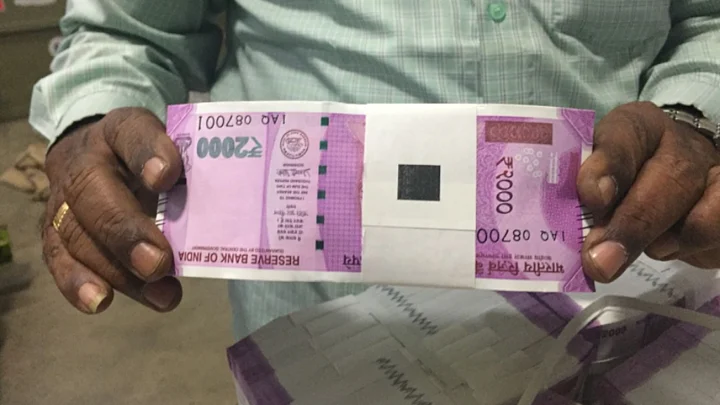In September this year, months before Prime Minister Narendra Modi announced the dramatic demonetisation of Rs 500 and Rs 1,000 notes with immediate effect, a mysterious photograph of what appeared to be wads of pink 2,000 rupee notes held together with white plastic tape, began circulating amongst select Whatsapp groups.
The photograph of the new 2,000 rupee note, according to businessmen, economists, and tax experts interviewed by The Quint, was the most tangible signal in a steady trickle of news, leaks, market intelligence and rumours that demonetisation would be the next step taken by the government after the voluntary income disclosure scheme ended.
According to members of these groups, interviewed by The Quint, the photograph was initially confined to groups of very wealthy and politically connected businessmen and their friends. By October, the photograph was moving across dark social platforms like Whatsapp and Telegram, before it went viral on Twitter on 6 November 2016. By then, the black economy’s regular paranoia was at a fever pitch.
Two days later, PM Modi made his announcement.
Early reports of the government’s surprise demonetisation announcement have emphasised the secrecy surrounding the operation.
“The demonetisation plan, the best kept secret in the power corridors of the national capital, was a tightly policed affair with only a handful of top officials privy to the move,” the Times of India reported on 10 November, describing how cabinet ministers were briefed only minutes before PM Modi addressed the nation.
Government spokespersons have justified the disruption to everyday economic life for millions of Indians as a small price to pay to catch the wealthy and corrupt by surprise.
RBI officials have refused to comment on the photograph, and The Quint’s calls to Finance Minister Arun Jaitley’s office were not returned.
Days before the demonetisation announcement, Mohan Guruswamy, an economist who served as adviser to Finance Minister Yashwant Sinha in Atal Bihar Vajpayee’s BJP government in 1999, fielded an unusual phone call.
“I’ve heard demonetisation will happen this week, what have you heard?” said a friend on the line, explaining that he wanted to go to Shirdi on pilgrimage, but was worried about his unaccounted cash pile. Guruswamy advised him to go on holiday, he hasn’t heard from the friend since.
Two weeks prior to that call, another acquaintance, a senior auditor, had told Guruswamy to expect demonetisation by December this year.
But how did photographs of the new Rs 2,000 notes, printed in such secrecy, leak into the public domain? And if businessmen knew that the new notes were printed and ready for dispatch, what else did they know?
It’s not like everyone knew and escaped, but the big birds have all flown. Black money is rarely held in India.Mohan Guruswamy
On average $51 billion was illegally transferred out of India every year from 2004 to 2013, according to Global Financial Integrity.
“The question is whether it makes sense to go through this disruption to gather sums of cash that will make no real difference to the economy,” Guruswamy said.
In an interview, a businessman in a cash-heavy sector told The Quint he had received prior warning of the impending demonetisation from a source in the government. “Then I got the photo of the 2,000 rupee note, and knew what was coming,” he said, adding that he had sufficient time to convert most of his money into smaller denominations.
Yet many interviewed by The Quint said that those following the market didn’t need high-powered leaks. Much of the information on demonetisation was hiding in plain sight – in the newspapers.
In January this year, The Hindu reported that 100 million defective 1,000 rupee notes had been introduced into the market by accident, prompting concerns at the RBI. Soon after, the Financial Express reported that the RBI had begun work on a new series of Rs 1,000 notes with enhanced security features.
Through the year, there were separate reports on the introduction of new 1,000 rupee notes, as well as new 2,000 rupee notes. On 21 October, about a fortnight before PM Modi’s address, the Business Line reported that the RBI had finished printing the first batch of Rs 2,000 notes at their press in Mysuru and were preparing for dispatch.
The same report carried the following prescient sentence:
“The move assumes significance in the wake of a demand from some quarters that notes of ₹1,000 and ₹500 denominations be withdrawn to prevent hoarding of black money.”
(Sources: Times Of India, The Hindu, Business Line)
